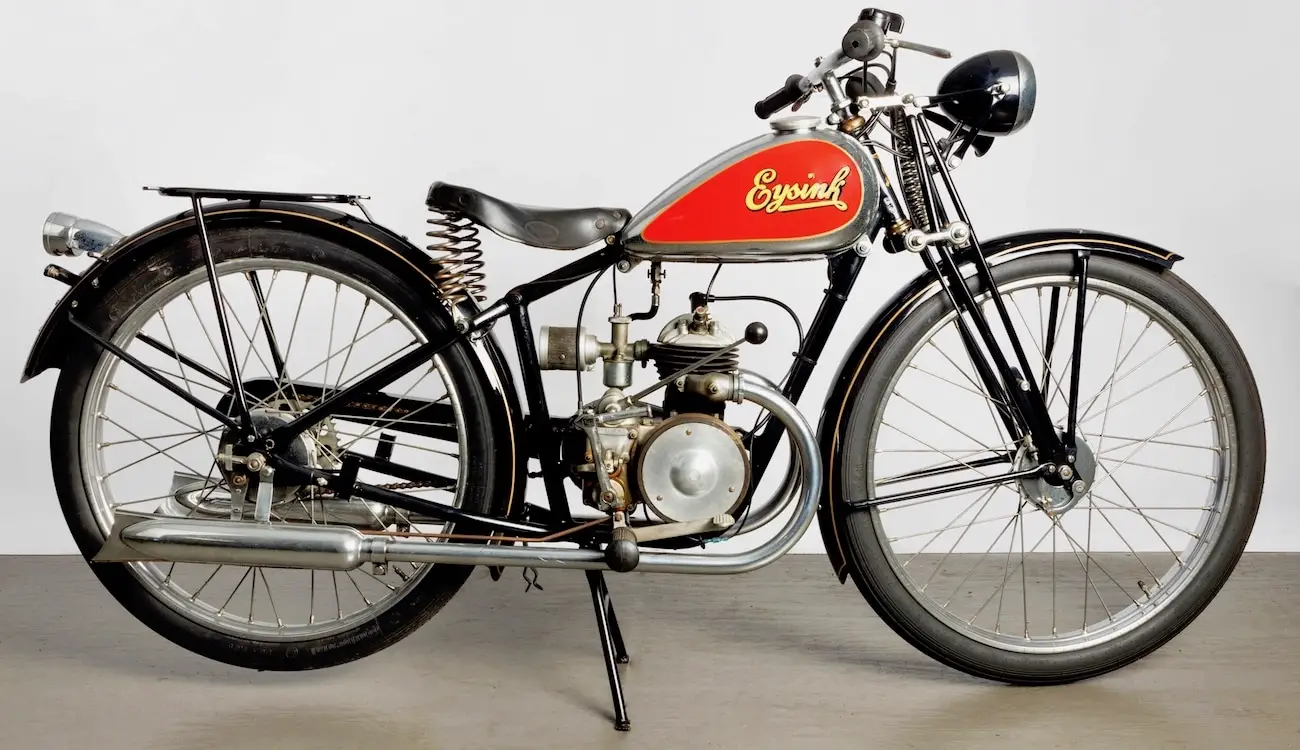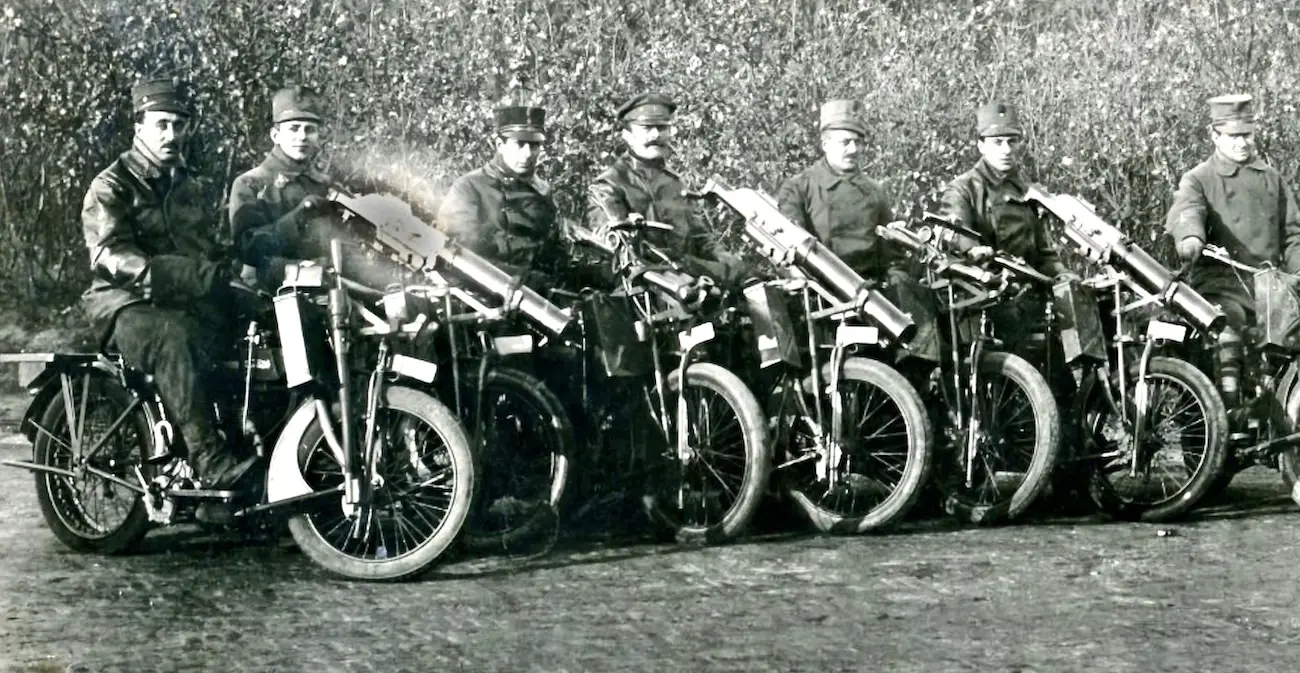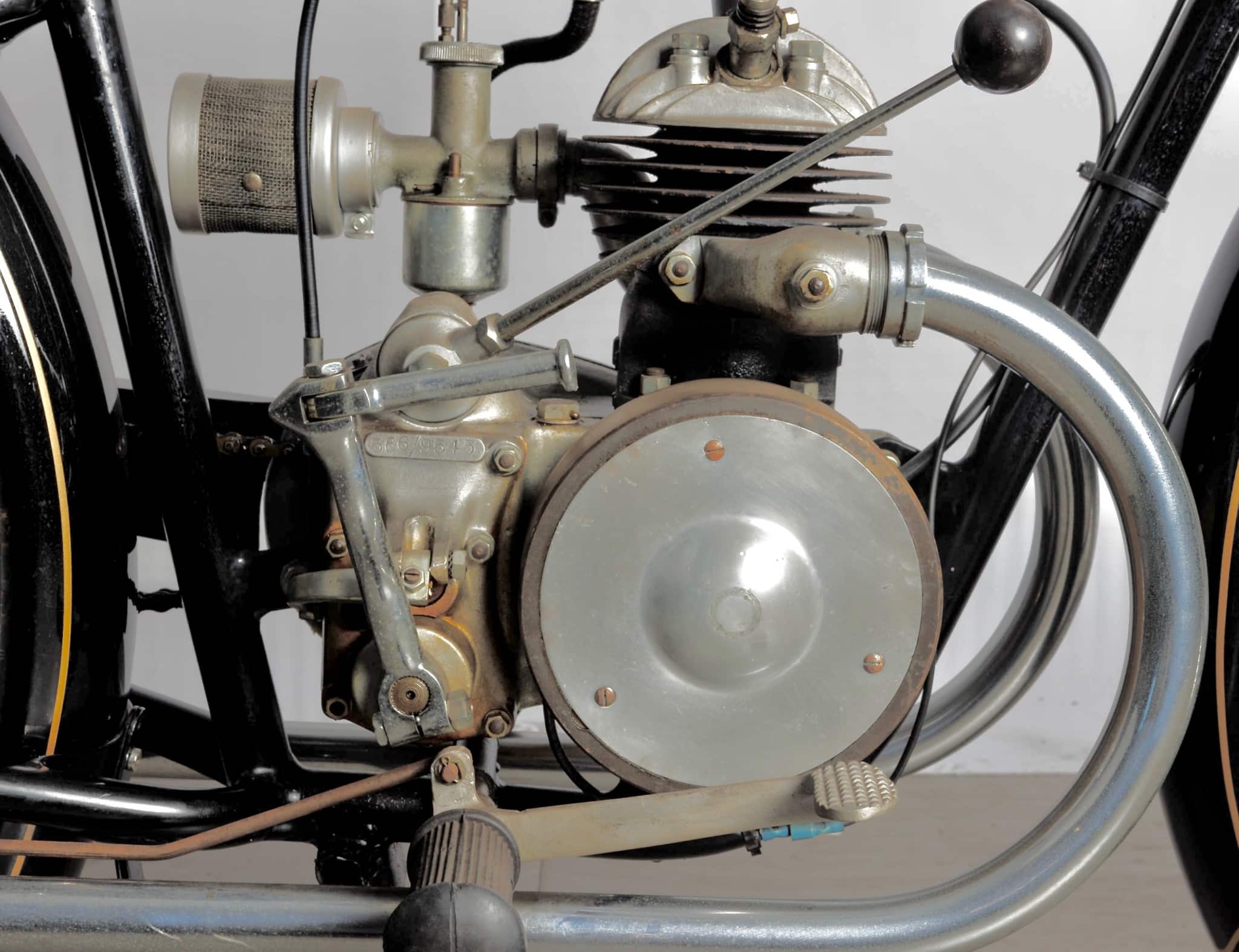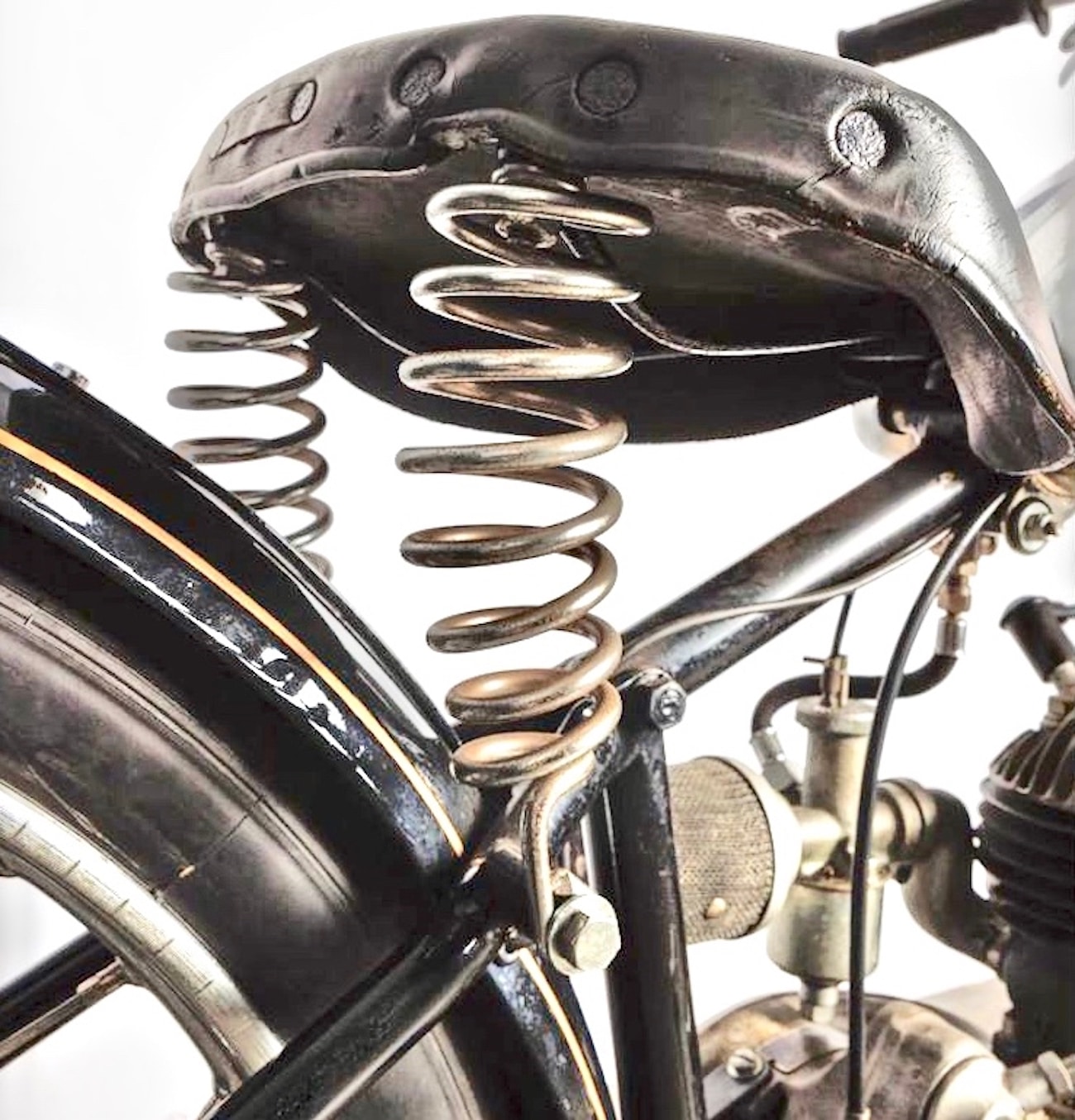BIKES YOU NEVER SEEN BEFORE: THE 1939 EYSINK JUBILEUM 125
 The Eysink 125 Jubileum got it’s name because it was built in Eysink’s 50th year in business.
The Eysink 125 Jubileum got it’s name because it was built in Eysink’s 50th year in business.
The Eysink motorcycle company, had a humble beginnings in the early 20th century, the Dutch-built Eysink swiftly rose to prominence as a symbol of innovation and quality in the motorcycle industry. The company’s iconic model was the 125 Jubileum, but they also made 250cc,365cc,425cc and 500cc twins and singles, Eysink got widespread acclaim and these machines found utility in variety of applications, including service with the Dutch Army during World War 1.
 The squad of Eysink’s with machine guns mounted to braces over the front of the bike in 1918.
The squad of Eysink’s with machine guns mounted to braces over the front of the bike in 1918.
The Eysink brothers from Amersfoort, Holland, created the eponymous motorcycle marque by starting out manufacturing bicycles. In 1897 they built their first automobile. However, the brothers did not begin production in earnest until 1903 when they built a range of shaft-driven motor cars. During that time, motorcycle and bicycle manufacture had taken precedence. Motorcycle manufacturing began in 1898 using single and v-twin engines from Belgian suppliers Kelecom, Sarolea and Minerva.
 The 125 Jubileum was powered by Villiers 125 two-stroke engine and had a hand shifter.
The 125 Jubileum was powered by Villiers 125 two-stroke engine and had a hand shifter.
In the years preceding WWII, Eysink built two-strokes with Villiers engines and four-stroke-models of 250cc to 500cc with JAP and Python (Rudge) engines. They also employed powerplants from Blackburne, JLO, Kelecom, Sarolea, Minerva Matchless and New Hudson.
 The Eysink’s came with springer forks that varied in design from girder forks to these high-tech cast designs.
The Eysink’s came with springer forks that varied in design from girder forks to these high-tech cast designs.
After World Ward II they produced two-stroke machines up to 250cc, again with Villiers engines. Eysink won the 125cc Assen TT in 1946 and 1948 on the Jubileum model ridden by Dick Renooy in the 125cc class at the AssenTT at Assen with an average speed of 110 kph. Although not known the USA at the time, the Eysink had even earlier success, including the Silver Vase at the 1931 International Six Days Trial, ridden by D.H. Eysink.
 Since there were no suspension components for the rear wheel, the rider relied on the coil spring suspension travel in the saddle.
Since there were no suspension components for the rear wheel, the rider relied on the coil spring suspension travel in the saddle.
The production of motorcycles halted in 1956, but moped production continuing until at least 1965. In off-road racing, Eysink had considerable success in the ISDT.






Comments are closed.